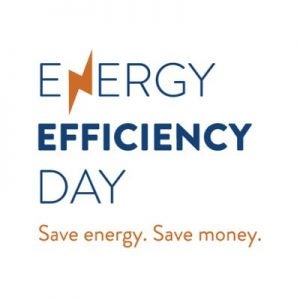How utilities can enter the energy-saving business this Energy Efficiency Day
 Today is Energy Efficiency Day in the U.S. As someone who’s advocated for energy efficiency for nearly a decade, I’m glad to see the resource celebrated. Efficiency, from LED lightbulbs to insulation, is the most critical energy resource we have – energy we don’t use is our cleanest and cheapest option.
Today is Energy Efficiency Day in the U.S. As someone who’s advocated for energy efficiency for nearly a decade, I’m glad to see the resource celebrated. Efficiency, from LED lightbulbs to insulation, is the most critical energy resource we have – energy we don’t use is our cleanest and cheapest option.
So, why isn’t everyone jumping on the efficiency bandwagon? In part it’s because utilities don’t usually encourage customers to save electricity. Electric companies make money by selling more electricity, so they’re reluctant to reduce use and their profits.
Nevertheless, utilities are logical places for energy efficiency programs, given their electricity relationships with customers.
Many states have efficiency goals that require utilities to invest in efficiency programs for customers, but much more could be done if the utility business model were reformed to align utility incentives with customer energy efficiency. Fortunately, several states across the country are reimagining the role of electric utilities in America’s 21st-century energy system, which could unlock efficiency’s potential.
Benefits of efficiency
Energy efficiency is a win-win-win solution. Reducing demand saves money and cuts pollution while enhancing grid reliability and resiliency. Certain energy efficiency improvements even have the potential to offer some protection during extreme weather events – like the latest technologies making windows energy efficient AND hurricane resistant.
[Tweet “How utilities can enter the energy-saving business this Energy Efficiency Day”]
Efficiency is also the ultimate water conservation tool. Coal and nuclear are the thirstiest energy resources; wind and solar PV use negligible amounts of water; and energy efficiency uses absolutely none. Saving energy saves water.
Furthermore, efficiency generates jobs at every level, from installer to engineer to architect to maintenance. Many of these jobs can’t be outsourced, and over 2.2 million Americans now work in energy efficiency-related jobs.
Flipping the paradigm
Historically, one of the stumbling blocks we’ve faced is the idea that saving and selling electricity comprise a zero-sum game: For utilities to profit, consumers have to buy more. Why can’t we design an electricity-saving approach that benefits both sides?
One potential pathway is for utilities to be paid to provide a service rather than just electricity. In today’s world, customers of any service have a myriad of different technology choices, and unprecedented access to data is empowering people to make more informed decisions. Electric utilities will remain behind the curve if they’re not thinking about how to embrace technology and new demands as opportunities to make money and keep customers.
For example, once utilities view customers as people with differing needs and wants — rather than as homogenous, anonymous ratepayers — a different demand paradigm may form. One possibility is a relationship in which people want to reduce their energy (and water) footprints but need and are willing to pay for the utility’s help to do so.
Positioning electric utilities as service providers could enable them to better integrate new technologies.
A new approach
What would that look like? Instead of selling kilowatts or electrons, utilities could bundle services and even provide offerings connected through smart meters or smart home technology, like home security systems. This type of business model could flip the incentive for a utility, and energy efficiency could be one of the services offered (rather than a built-in money loss for the traditionally-organized utility).
Moreover, positioning electric utilities as service providers could enable them to better integrate new technologies, enhance reliability, and better customize service packages.
Some states are forging forward on transforming their utility sectors to be friendlier to energy efficiency. New York’s Reforming the Energy Vision initiative, for example, looks to align how utilities make money with the benefits they provide to their customers, and encourages them to support a decentralized energy system that ultimately benefits the environment.
A part of this effort is the Neighborhood Program, previously known as the Brooklyn-Queens Demand Management Program. Con Edison, the state’s biggest electric utility, created the Neighborhood Program to motivate customers to reduce energy use during periods of peak (or high) demand to relieve stress on the grid. By using energy efficiency – in combination with solar, batteries, and energy management programs – in a particular geographic area, the utility is improving its operations and even suspended the construction of $1 billion in electricity infrastructure in Brooklyn. It saves money by using the utility’s relationship with their customers.
Illinois has embarked on a similar “utility of the future” process titled NextGrid, and Environmental Defense Fund is participating to ensure it results in a more dynamic, efficient grid designed to support this new paradigm. The effort comes on the heels of the historic Future Energy Jobs Act, which is set to double the state’s energy efficiency portfolio. As a result, Illinois’ largest utility, ComEd, has already agreed to invest hundreds of millions to expand its efficiency programs.
On Energy Efficiency Day, it’s encouraging to see states and utilities considering a more flexible way of doing business. Updating the old utility business model can open the door to a more efficient, cleaner, and customer-oriented energy system.










